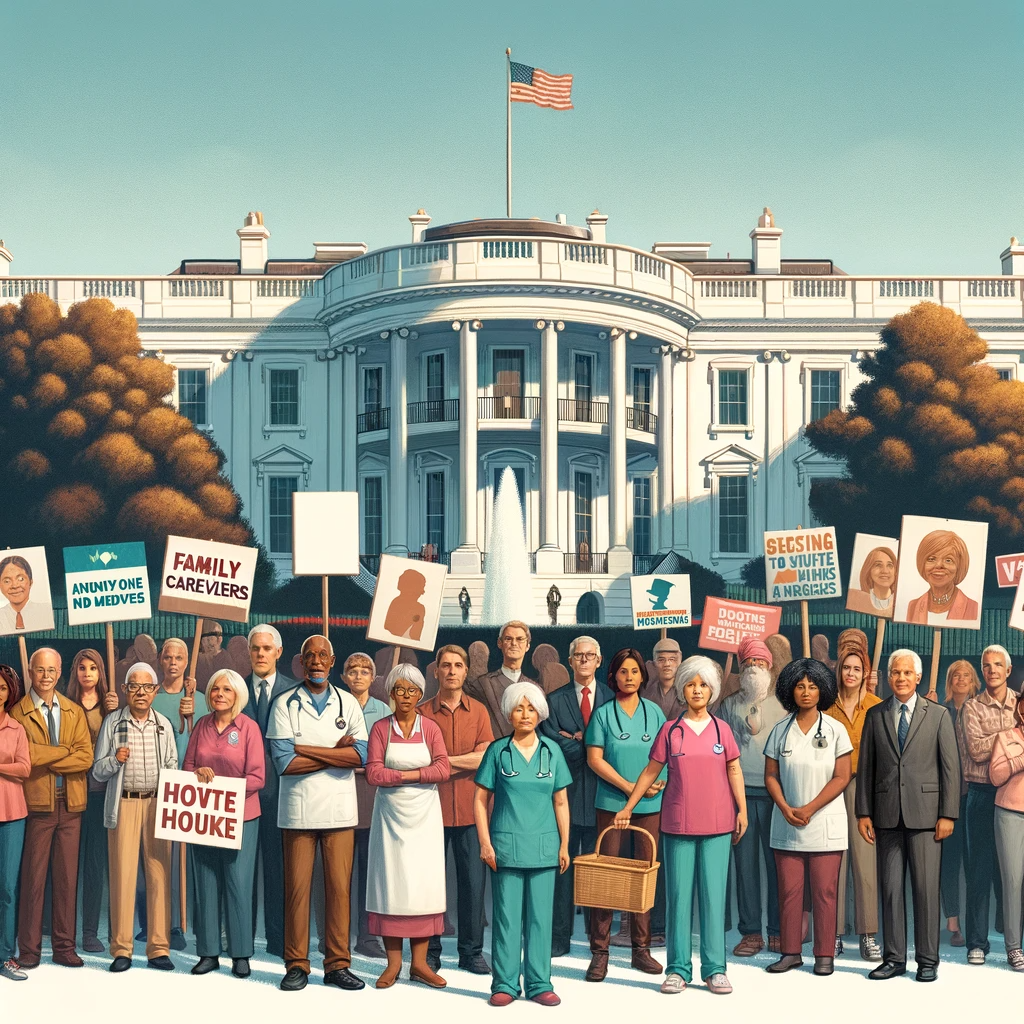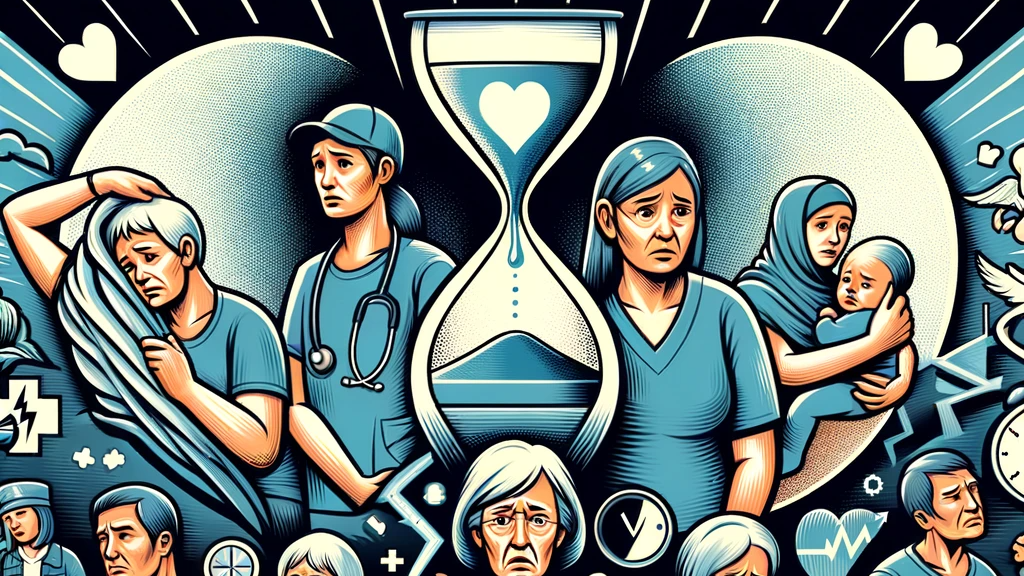Navigating the Caregiver Crisis in America: Building Awareness and Seeking Solutions for 2025
America is at a crossroads when it comes to caregiving. The caregiver crisis is reaching critical levels, with an urgent need for solutions and support.

Introduction
America is at a crossroads when it comes to caregiving. The caregiver crisis is reaching critical levels, with an urgent need for solutions and support. As we look forward to the White House Office of Aging Conference in 2025, the importance of creating public awareness about this issue cannot be overstated. In this article, we'll delve into the caregiver crisis, its impact on families, and why we must act now to address this pressing concern.
Understanding the Caregiver Crisis
The caregiver crisis in the United States is a multifaceted challenge that affects millions of families. Family caregivers are the unsung heroes of our healthcare system, providing essential care to loved ones. However, they often do so at great personal cost, both financially and emotionally.
Statistics That Demand Attention
- Over $650 billion worth of unpaid care is provided by family caregivers annually.
- A staggering 63% of family caregivers develop serious illnesses or face death before the person they care for does.
- The aging population in America is growing rapidly, with more seniors than ever before.
- The shortage of direct care workers further compounds the caregiving burden on families.
- High copays associated with Medicare Advantage programs are pushing more responsibilities onto family caregivers.
We are facing a crisis—a very real and very scary crisis.
Fact: Within 2 years it is estimated that over 150 million people will need help in the form of a caregiver or care worker.
Fact: 10,000 people a day are currently turning 65.
Fact: Direct care workers are leaving the industry in droves because of low pay, long hours and little support.
Fact: If trends continue, seniors won’t be able to stay in their homes, and staffing shortages are making it impossible for nursing homes and other such facilities to take in more seniors.

All of this adds up to a crisis the size of which we really have never seen in this sector before.
This legislative move could potentially ease the burden on family caregivers and allow them to take care of their own well-being. We urge you to join us in supporting this bill and ensuring that the voices of family caregivers are heard on the national stage during presidential campaigns.
Let us work together towards creating a better future for all family caregivers and their loved ones. Together, we can make a difference. As we gear up for another round of presidential elections, let us not forget about the unspoken heroes of our society—family caregivers. Together, we can make a change and improve their lives for the better.
The Caregiver Relief Act is a crucial step towards supporting family caregivers and acknowledging the significant contributions they make to society. It also highlights the need for more comprehensive policies that address their unique challenges.
The Urgency of Public Awareness
Creating public awareness about the caregiver crisis is essential for several reasons:
- Advocacy: By raising awareness, we empower caregivers to become advocates for change. The more people understand the challenges caregivers face, the stronger the call for action becomes.
- Policy Change: Public awareness can lead to policy changes at both state and federal levels. It can influence decision-makers to prioritize caregiver support initiatives.
- Community Engagement: Communities can come together to support caregivers locally. Awareness fosters a sense of solidarity and encourages neighbors and friends to lend a helping hand.
- Caregiver Empowerment: Caregivers themselves can benefit from increased awareness. They may be more likely to seek support, access available resources, and avoid caregiver burnout. We encourage building cae team partner support groups so provide regular and ongoing respite care for the family caregiver.
The White House Office of Aging Conference in 2025
The upcoming White House Office of Aging Conference in 2025 presents a crucial opportunity to address the caregiver crisis head-on. This event can serve as a platform for policymakers, healthcare professionals, caregivers, and advocates to come together, discuss challenges, and propose solutions.
Understanding the White House Conference on Aging

The White House Conference on Aging (WHCOA) is a once-in-a-decade event, pivotal for shaping national policy and public attitude towards aging. This conference serves as a platform to discuss and address the most pressing issues faced by older Americans. It brings together policymakers, healthcare professionals, industry leaders, and advocacy groups to deliberate on various aspects of aging, including healthcare, long-term care, retirement security, and elder justice.
Impact on Caregivers and Direct Care Workers
- Policy Development and Advocacy: The WHCOA plays a crucial role in highlighting the challenges and opportunities in caregiving. By bringing these issues into the national spotlight, the conference aids in the development of policies that directly benefit caregivers and direct care workers, ensuring their concerns are heard at the highest levels of government.
- Recognition and Support: Caregivers and direct care workers often operate without adequate support and recognition. The conference acknowledges their invaluable contribution to society, paving the way for enhanced support systems, better training, and more substantial resources. We need to make them aware that the time has come to put policies in place. We need actions not just words.
- Financial Security and Benefits: One of the critical areas of discussion often includes the financial strain faced by caregivers. The conference can lead to initiatives that address this, such as tax credits, subsidies, or improved compensation structures for direct care workers. We want to have federal funding to support the family caregiver. We are also advocating for regular and ongoing affordable respite care options.
- Health and Wellbeing: Caregivers often neglect their health due to the demands of caregiving. The WHCOA can be instrumental in advocating for better health and mental health support for caregivers, recognizing the physical and emotional toll of their work.
- Training and Professional Development: For direct care workers, the conference can spotlight the need for professional development and training, leading to better job preparedness and higher standards of care. The family caregiver is expected to provide care and treatments to their family members with out any education or support. These are tasks that were once done by professional nurses. Medicare and Medicaid reimbursement has led to the family caregiver picking up what insurance won's pay for.
- Public Awareness and Education: The WHCOA often generates increased public awareness about the roles and challenges of caregivers. This heightened awareness can lead to greater community support, more volunteerism, and broader understanding of aging-related issues.
- Innovation and Technology: The conference also focuses on technological advancements that can make caregiving more manageable and efficient. Discussions around technology can lead to the adoption of new tools and resources that assist caregivers in their roles.
- Collaborative Efforts: The WHCOA fosters a collaborative environment, encouraging partnerships between government, private sectors, and non-profits. This collaboration can lead to innovative solutions and stronger support networks for caregivers.
The White House Conference on Aging is more than a mere discussion forum; it's a catalyst for change. For caregivers and direct care workers, the impacts of this conference are far-reaching, influencing policies, resources, and public perception. By addressing the unique challenges faced by this group, the WHCOA plays a vital role in shaping a more supportive and sustainable caregiving environment in America.

Conclusion
The caregiver crisis in America is a pressing issue that demands our attention and action. By creating public awareness and leveraging events like the White House Office of Aging Conference in 2025, we can work towards meaningful solutions. Caregivers are the backbone of our long-term care system, and it's time we recognize their invaluable contributions and provide them with the support they deserve. Join the movement, sign petitions, and advocate for change. Together, we can navigate the caregiver crisis and ensure a brighter future for both caregivers and care recipients.
Please sign and share this petition
Please share the challenges and obstacles you face as a caregiver. We must tell our stories so the public will become aware of the struggles that every caregiver and direct care worker faces.
You might also like this article:









